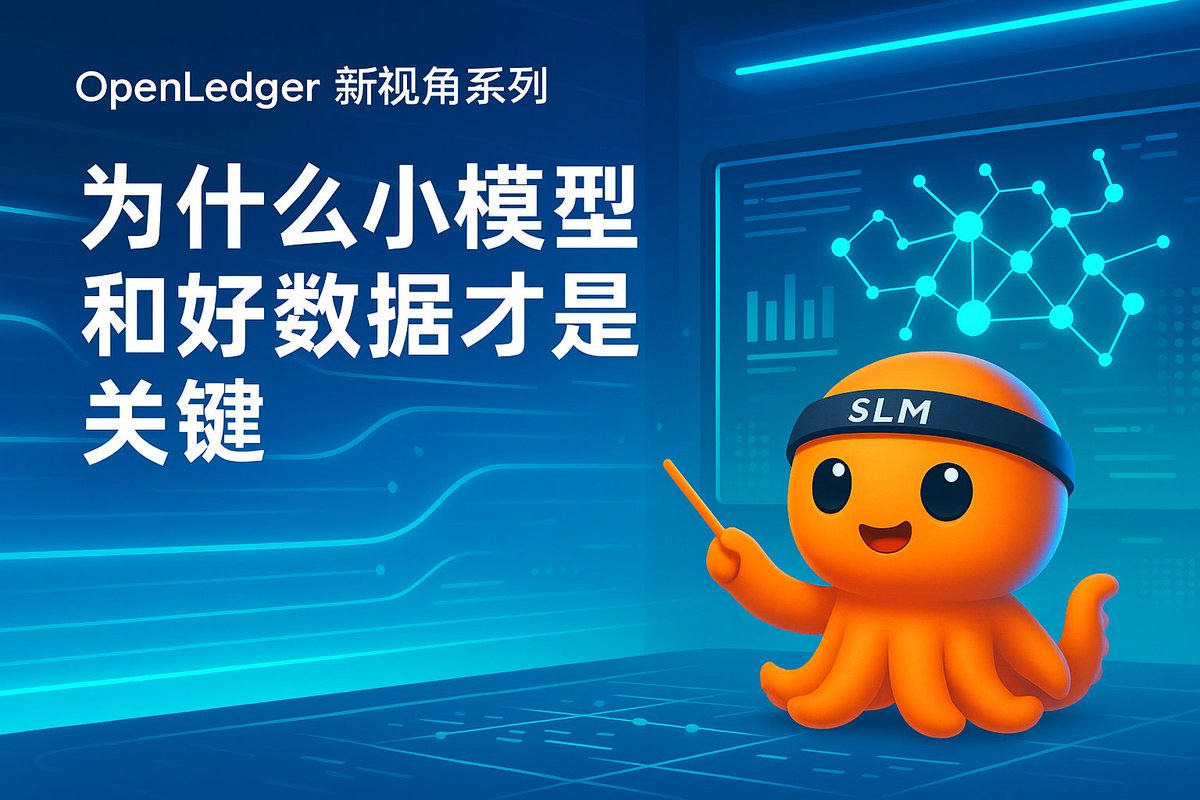[The future beyond LLMs: Why are small models and good data key?] 】
In the past two years, LLMs (large language models) have become synonymous with the AI world, from GPT to Claude, from Gemini to Llama, each competing for the number of parameters, emergence ability, and reasoning limits. But as the tech frenzy returns to calm, a new trend is emerging – small language models (SLMs) and high-quality data are becoming the real focus of the next phase of AI evolution.
This article will start from this trend, revisit the key role OpenLedger plays in it, and consider the competitive code of the "post-LLM era".
1. The bottleneck of large models: it is not that the larger the parameter, the better
There is no doubt that large models have opened a new era of AI. But as LLMs are stacked and scaled further, multiple bottlenecks become more apparent:
(1) Inference costs are too high: Large models generally require expensive computing power resources and are not suitable for edge deployment or high-frequency calls;
(2) Slow response speed: especially in complex reasoning or long context processing scenarios, there are delays and inefficiency;
(3) The dilemma of "average": large models pursue versatility, but lack the ability to accurately respond to questions in vertical fields;
(4) Data is not traceable: The data used in the model training process is often mixed and unclear, with bias, abuse and opacity.
These issues not only limit the large-scale implementation of LLMs but also provide breakthroughs for SLM and data-driven innovation systems.
2. Advantages of the small model era: lightweight, professional, controllable
The rise of SLM is not accidental, but a reflection on the uneconomical and unreliable nature of large models. In several real-world scenarios, SLM demonstrates the following benefits:
(1) Customizable: It can be fine-tuned around specific tasks (such as customer service, trading, translation, etc.), and the performance is more focused;
(2) Low cost: The inference overhead is smaller, suitable for deployment on local, mobile phones or edge nodes;
(3) Strong controllability: the training process is shorter, and the data sources used can be clearly recorded, which is conducive to traceability and compliance;
(4) Decentralized deployment: It is easier to embed in the Web3 environment, forming an on-chain callable and auditable model network.
This trend is also very much in line with OpenLedger's design philosophy.
3. The position of OpenLedger: reshaping the model paradigm with "good data"
OpenLedger does not directly compete with the model layer of LLMs, but chooses to reconstruct data systems from the ground up to serve the rise of SLM. Its core logic is:
(1) Make data "valuable": Provide trustworthy, traceable, and tradable data assets for AI models through the PoA mechanism and Datanets network.
(2) Encourage model openness: The Payable AI model enables SLM to be called and access tasks, and revenue is distributed according to usage.
(3) Incentive real contribution: Through the reputation system and incentive mechanism, bind the interests of data producers, model developers and callers.
This means that OpenLedger has built an open ecosystem around "small models + good data", providing a structural supplement to the post-LLM era.
4. Future picture: from "big and complete" to "small and specialised"
It is foreseeable that future AI will not have only one take-all-all large model, but a network of "micro-intelligent units" that revolves around the scene. These small models will:
(1) Connect with high-quality data sources instead of scraping Internet noise;
(2) Verify its training process and call history through on-chain mechanisms to enhance credibility;
(3) Form linkages with different application protocols (DeFi, GameFi, social, etc.) to build an AI-driven Web3 tool layer.
OpenLedger is building the infrastructure for this trend: it is not about the parameters, but about the "data value determination mechanism" and "incentive distribution model", which is essentially a public platform that provides a trusted soil for AI models.
OpenLedger's ambition is not to create the next GPT, but to provide the underlying support for data flow, reputation recognition, and incentives for the next generation of SLMs. Outside of the old paradigm of "parameters are power", it tries to answer a more essential question:
"Who can provide the credible soil for the future of AI?"
In a new cycle where models are no longer omnipotent and data is key, OpenLedger is at the right narrative inflection point.
@OpenledgerHQ @cookiedotfun #OpenLedger #COOKIE #全面拆解OpenLedger系列
Show original
10.8K
50
The content on this page is provided by third parties. Unless otherwise stated, OKX is not the author of the cited article(s) and does not claim any copyright in the materials. The content is provided for informational purposes only and does not represent the views of OKX. It is not intended to be an endorsement of any kind and should not be considered investment advice or a solicitation to buy or sell digital assets. To the extent generative AI is utilized to provide summaries or other information, such AI generated content may be inaccurate or inconsistent. Please read the linked article for more details and information. OKX is not responsible for content hosted on third party sites. Digital asset holdings, including stablecoins and NFTs, involve a high degree of risk and can fluctuate greatly. You should carefully consider whether trading or holding digital assets is suitable for you in light of your financial condition.

